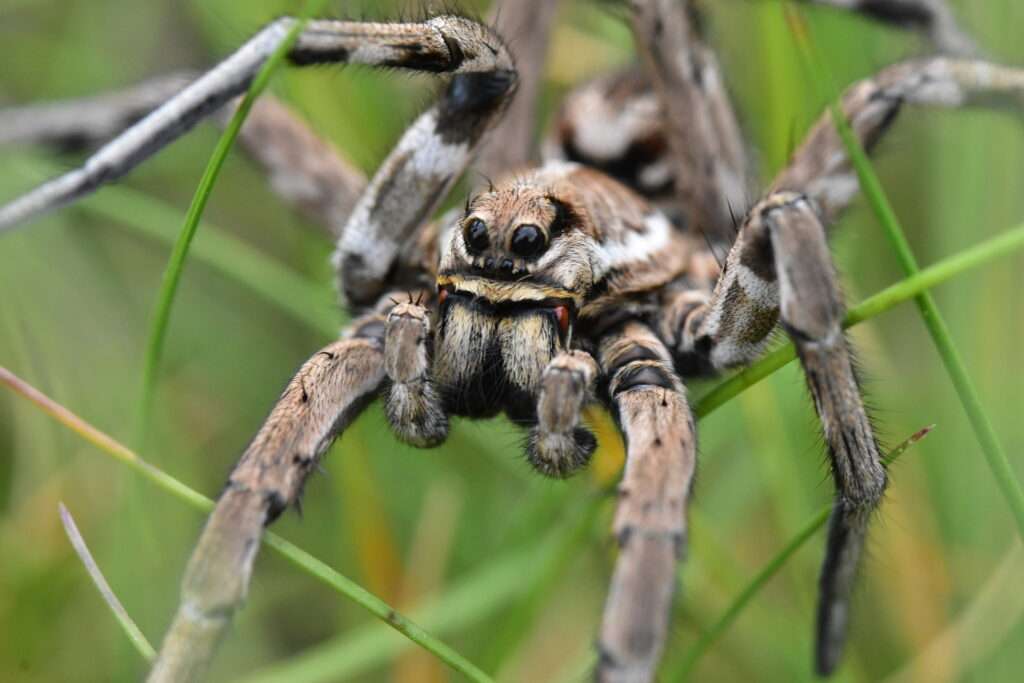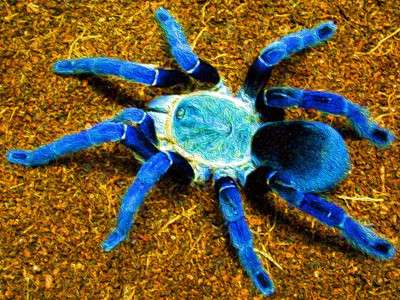
The tarantula, now often used to refer to spiders from a different family, the Theraphosidae, in English, was first used to refer to the species Lycosa tarantula. Given that it belongs to the Lycosidae family of wolf spiders, it may now be more appropriately referred to as the tarantula wolf spider.
Habitat
L. tarantula is a sizable species that is widespread throughout southern Europe, particularly in the Italian province of Apulia and close to Taranto, from where it derives its name.
Description
- These spiders are huge, with the females reaching a body length of up to 30 mm (1.18 in) and the males being around 19 mm (0.75 in).
- Similar to other wolf spiders, the mother carries the silken sac with more than 100 eggs attached to her spinnerets.
- When the eggs hatch, the spiderlings crawl onto the mother’s abdomen and travel with her until they are old enough to survive on their own.
- The juvenile spiders scatter and create burrows after they are no longer under their mother’s care.
- The mature males leave the safety of burrows and wander around hunting for mates, while the females spend their entire lives in their burrows with the exception of nocturnal expeditions to capture prey.

They mostly eat small spiders, arthropods, grasshoppers, beetles, and other insects, though they will occasionally devour small lizards.
Lifespan
Males have a two-year lifespan. The lifespan of a female is at least four years. According to one study, around one-third of sexual encounters result in the female cannibalizing the male instead. These spiders hibernate in their burrows throughout the winter.
Behavior
People are unlikely to encounter them because they are a nocturnal species that typically lurks at the mouths of their burrows while waiting for prey. The Lycosidae (wolf spiders) have a very strong propensity to flee at the approach of any large animal, in contrast to the Salticidae (jumping spiders), which may show curiosity toward humans and may be content to wander around on one’s hand. Because of their keen eyesight, a person is unlikely to be able to sneak up on them, and because they are always on the move and have a high top speed, capture is a challenge. Wolf spiders don’t tend to conduct threat demonstrations when trapped, much less go closer to a person’s palm with the intent to bite.
Venom
All spiders, with the exception of the Uloboridae, possess venom, which is vital to the L. tarantula’s ability to kill its prey and, subsequently, to defend itself. The venoms were adapted during evolutionary time to subdue insect prey, and various mammal species can react very differently to the same spider venom. Unless repeatedly provoked, L. tarantulas rarely bite, and its venom is not very poisonous to people and does not hurt any worse than a bee sting. Fabre did show, however, that tarantula bites can kill small mammals and birds when supplied artificially.
As Pet
Try keeping a wolf spider as a pet if you want a low-maintenance animal. Wolf spiders prefer shadowy areas, so a plastic margarine tub turned upside down with a hole cut out makes an ideal refuge. Don’t forget to supply food and drink. By soaking a little piece of sponge and keeping it mold-free, water can be supplied.
Table





